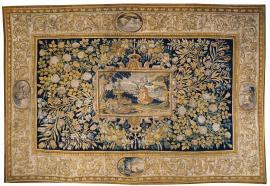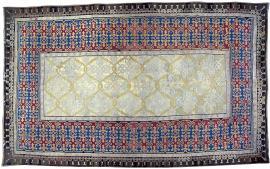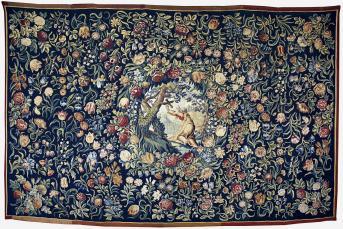Table Carpets
Tables in the past, as now, were essential for dining, meeting, and for display. During dining, easily washable linen and linen damask tablecloths were used. But between meals, and for meetings, opulent textured table covers were essential. Highly expensive imported Persian and Turkish carpets were used as table covers, and are frequently portrayed in early paintings. However these imports could not be customised, unlike locally produced tapestry or needlework. From the 16th century, and possibly earlier, a fashion developed both for tapestry and needlework table carpets, which could contain family armorials and feature designs that emphasised their owner’s interests, such as hunting, botany, or religious narratives.
Elijah and the Ravens
Price on application
Tapestry Table Carpet with Tulips
Northern Netherlands, probably Gouda or Delft
After 1630
9ft 0in width x 5ft 9in height
2.74m x 1.75m
-

Pyramus and Thisbe
Price on application
Tapestry Table Carpet
Northern Netherlands, probably Spiering Workshops
First Quarter, 17th Century
8ft 1in width x 5ft 6in height
2.46m x 1.68m -

The Bardini Table Carpet
Price on application
A Unique Hispano-Moresque Renaissance Tapestry
From the collection of Stefano Bardini (1836-1922)
Medici Workshops, Florence, before 1550
11ft 3in width x 6ft 10in height
3.43m x 2.08m
